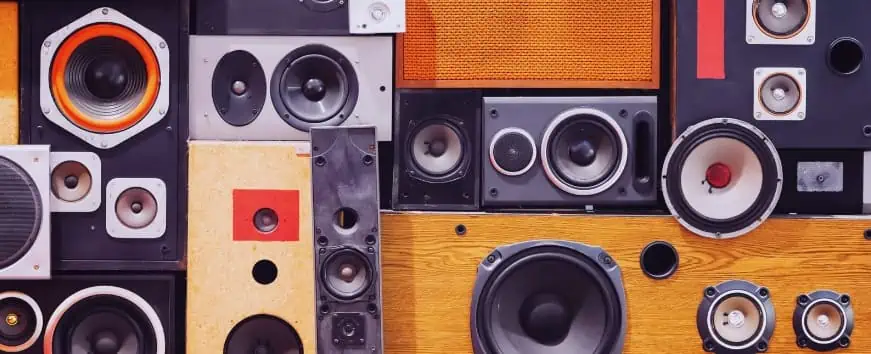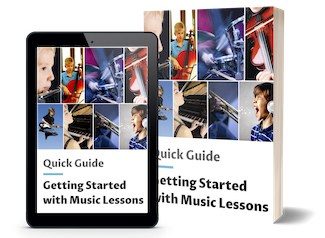When I first started building my audio setup, I faced the same confusing choice that stumps many music lovers: should I go with monitor speakers or hi-fi speakers? The terms get thrown around constantly, but the actual differences aren’t always clear.
Monitor speakers are designed for accuracy and truth, while hi-fi speakers are built to make music sound pleasant and enjoyable. This core difference affects everything from how they’re built to how they’ll sound in your room.
I’ll walk you through the real differences between these speaker types, help you understand when each works best, and give you the knowledge to make the right choice for your specific needs and budget.
What Are Monitor Speakers?
Monitor speakers are specialized audio devices built for accuracy rather than entertainment. They’re designed to reveal every detail in your audio, whether you’re mixing tracks or mastering a final recording.
Definition and Purpose
I like to think of monitor speakers as the truth-tellers of the audio world. While regular speakers try to make everything sound good, monitors show you exactly what’s in your recording – the good, the bad, and the ugly.
Audio engineers and music producers rely on these speakers during mixing and mastering.
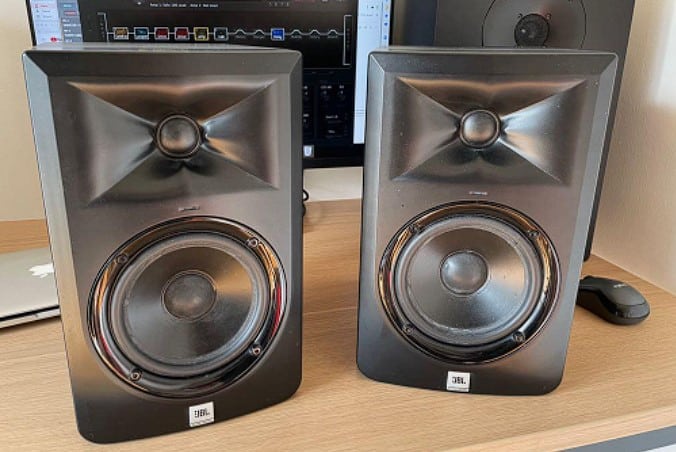
They need to hear every flaw, every subtle detail, and every frequency with crystal clarity. This helps them make better decisions about their audio.
The main goal is achieving a flat frequency response. This means no frequency gets boosted or cut artificially. What you hear is what you get – no sugar-coating.
Unlike hi-fi speakers that color the sound to make it pleasing, monitors stay neutral. They’re like having an honest friend who tells you the truth even when it hurts.
Key Features of Studio Monitors
Studio monitors come with several key features that set them apart. The most important is their commitment to accuracy over enjoyment.
Most monitor speakers have a narrow sweet spot for listening. You need to sit in just the right position to get the best sound. This usually means forming an equilateral triangle between you and the two speakers.
Many monitors don’t have grilles covering the drivers. This reduces any potential sound coloration that fabric or mesh might cause.
The tweeters are typically positioned at ear level when you’re seated. This gives you the most accurate representation of high frequencies.
Frequency response stays flat across most of the spectrum. There’s no artificial bass boost or treble enhancement like you’d find in consumer speakers.
Yamaha HS8 8-inch Powered Studio Monitor
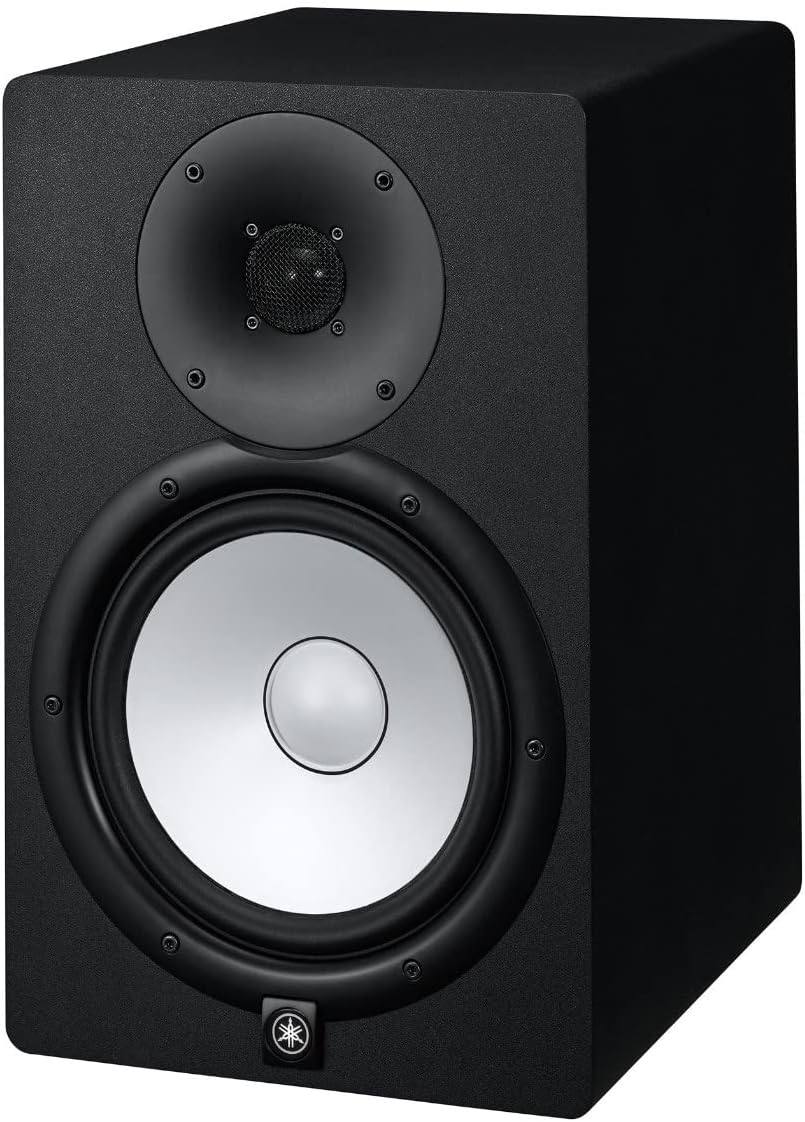
FEATURES: 8-inch active studio monitor and 38Hz - 30kHz frequency response
OTHER INFO: Two-way bass-reflex bi-amplified nearfield monitor
- Room control and high-trim response controls give you optimum response in any room
- Some may find its accurate sound profile lacking in bass for those desiring a more pronounced low-end
When you click ‘Check Price’, you’ll see there are loads of great places to buy this item. Our personal favorite is Sweetwater for the US, and Thomann and Gear4Music for the UK & Europe.
They are the largest music retailers, with excellent customer service, competitive prices, really fast shipping, and the longest guarantees.
The professional musician who wrote this article combined many things,
from the product build, manufacturer’s reputation through to feedback
from other users, to create our famous TedScore™.
Active vs Passive Studio Monitors
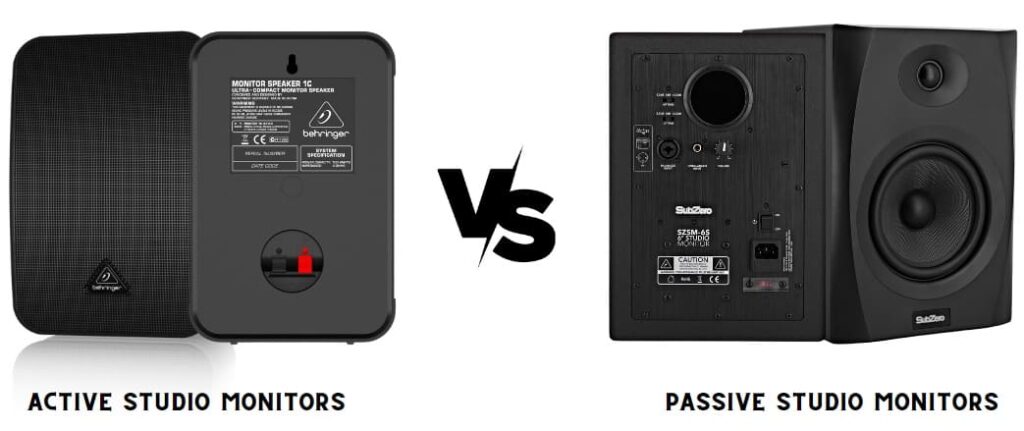
Most studio monitors are active speakers, which means they have built-in amplifiers. Each driver gets its own dedicated amp, which gives better control over the sound.
Passive speakers need external amplifiers to work. You have to match the right amp with the right speaker, which takes more knowledge and planning.
Active monitors often use active crossovers that split frequencies before amplification. This approach gives better precision and lets manufacturers fine-tune the sound more easily.
I find that active studio monitors are simpler for most people. You just plug them in and they’re ready to go – no need to shop for separate amplifiers or worry about matching components.
Sound Quality and Frequency Response
Studio monitors and HiFi speakers take completely different approaches to sound reproduction. Monitors aim for flat, accurate sound while HiFi speakers often enhance certain frequencies to create a more pleasing listening experience.
Flat Frequency Response vs Enhanced Sound
Studio monitors are designed with flat frequency response as their main goal. This means they reproduce all frequencies at equal levels without boosting or cutting specific ranges.
HiFi speakers take a different approach. They often have enhanced sound signatures that boost bass or treble to make music sound more exciting and enjoyable.
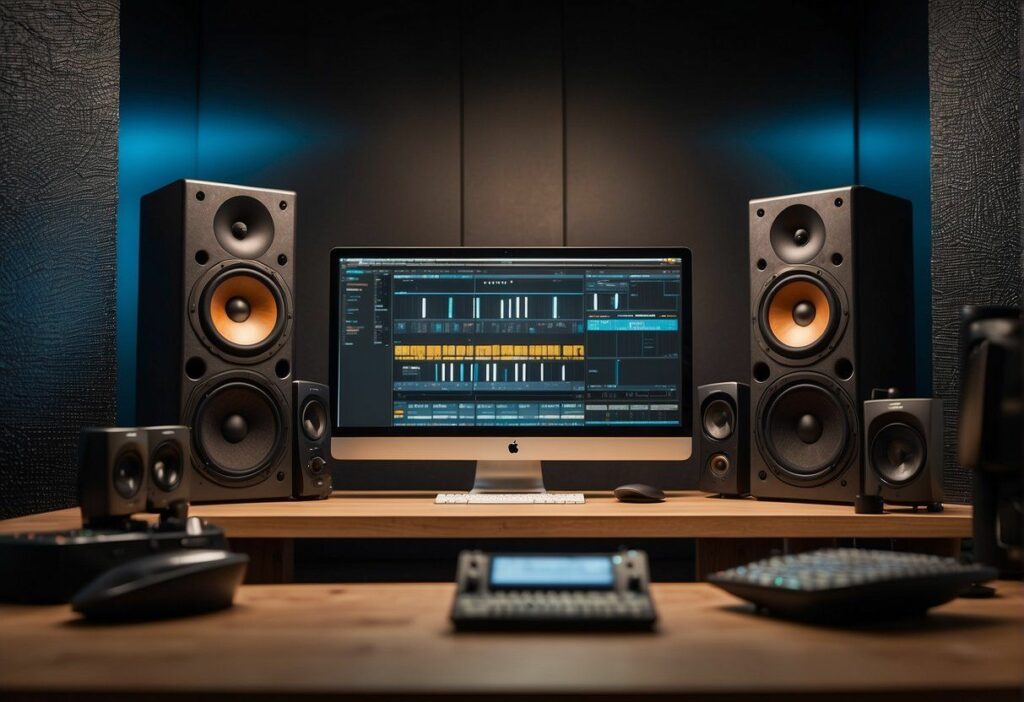
I’ve noticed that monitors can sound “boring” to casual listeners at first. They don’t add the warmth or punch that many people expect from speakers.
HiFi speakers are tuned to sound good right out of the box. Different brands have their own sound signature – B&W might emphasize clarity while others boost bass response.
The flat response of monitors means you hear exactly what’s in your audio files. No hidden coloration or enhancement masks problems in your recordings.
Accurate Sound Reproduction
Accurate sound reproduction is critical for anyone working with audio production. Studio monitors let you make mixing decisions based on what’s actually there, not what sounds pleasant.
I find that monitors reveal details in music that HiFi speakers might smooth over. Every instrument sits in its proper place without artificial enhancement.
HiFi speakers prioritize enjoyment over accuracy. They might make vocals sound warmer or drums hit harder than they actually do in the recording.
This difference matters most when you’re creating content. If your monitors lie to you about bass levels, your mixes will sound thin on other systems.
Monitor speakers also maintain their accuracy at different volume levels. HiFi speakers might sound great loud but lose their balance when played quietly.
Impact on Audio Production and Enjoyment
For music production work, flat frequency response is essential. You need to trust that what you hear matches what others will experience on their systems.
I’ve learned that mixing on HiFi speakers can lead to disappointing results. What sounds perfect in your studio might translate poorly to car stereos or headphones.
HiFi speakers excel at making finished music sound engaging and fun. They’re designed to make your favorite songs come alive in your living room.
The enhanced sound quality of HiFi speakers works well for casual listening. Movies feel more immersive and music has more emotional impact.
Studio monitors help you catch problems early in the production process. Flat response reveals harsh frequencies, muddy bass, or timing issues that need fixing.
Speaker Components: Drivers, Tweeters, and Subwoofers
The main difference between monitor and hi-fi speakers lies in their drivers and how these components work together. Monitor speakers use flatter driver responses while hi-fi speakers often boost certain frequencies for enhanced listening.
Roles of Drivers in Each Speaker Type
I notice that drivers work very differently in monitor speakers compared to hi-fi speakers. In monitors, each driver aims for accuracy above all else.
Monitor speakers use drivers that reproduce sound as flatly as possible. This means my woofer won’t add extra bass punch like it would in a hi-fi speaker.
The tweeter in my monitor stays neutral too. It doesn’t brighten up vocals or make cymbals extra sparkly.
Hi-fi speakers take a different approach with their drivers. The woofer might boost certain bass frequencies to make music sound more exciting.
Tweeters in hi-fi systems often enhance high frequencies. This makes music sound crisp and lively for casual listening.
I can think of it this way: monitor drivers tell the truth, while hi-fi drivers make things sound good. Both approaches serve their purpose perfectly.
Tweeters, Woofers, and Subwoofer Differences
Tweeters handle all the high-frequency sounds in both speaker types. In monitors, my tweeter reproduces everything from 2,000 Hz up to 20,000 Hz without coloring.
Hi-fi tweeters often add some sparkle to these high frequencies. They might boost certain ranges to make music more enjoyable.
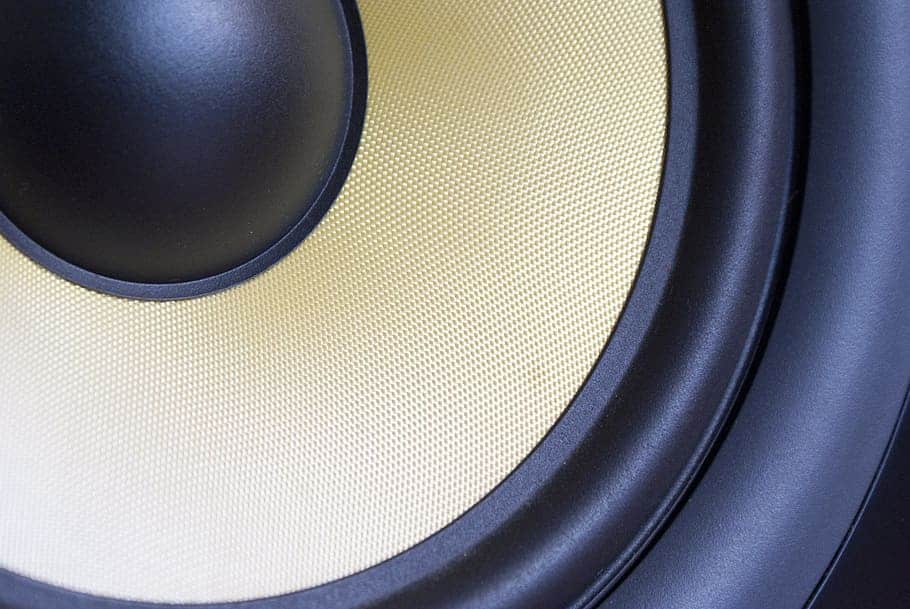
Woofers cover the low and mid-range frequencies in most speakers. Monitor woofers focus on accuracy across their entire range.
Hi-fi woofers frequently emphasize bass frequencies. This gives music more punch and warmth that people love.
Subwoofers are less common in monitor setups. When I do use one with monitors, it stays flat and accurate.
Hi-fi subwoofers usually boost the very lowest frequencies. They create that chest-thumping bass that makes movies and music exciting.
SubZero C18S Passive PA Subwoofer
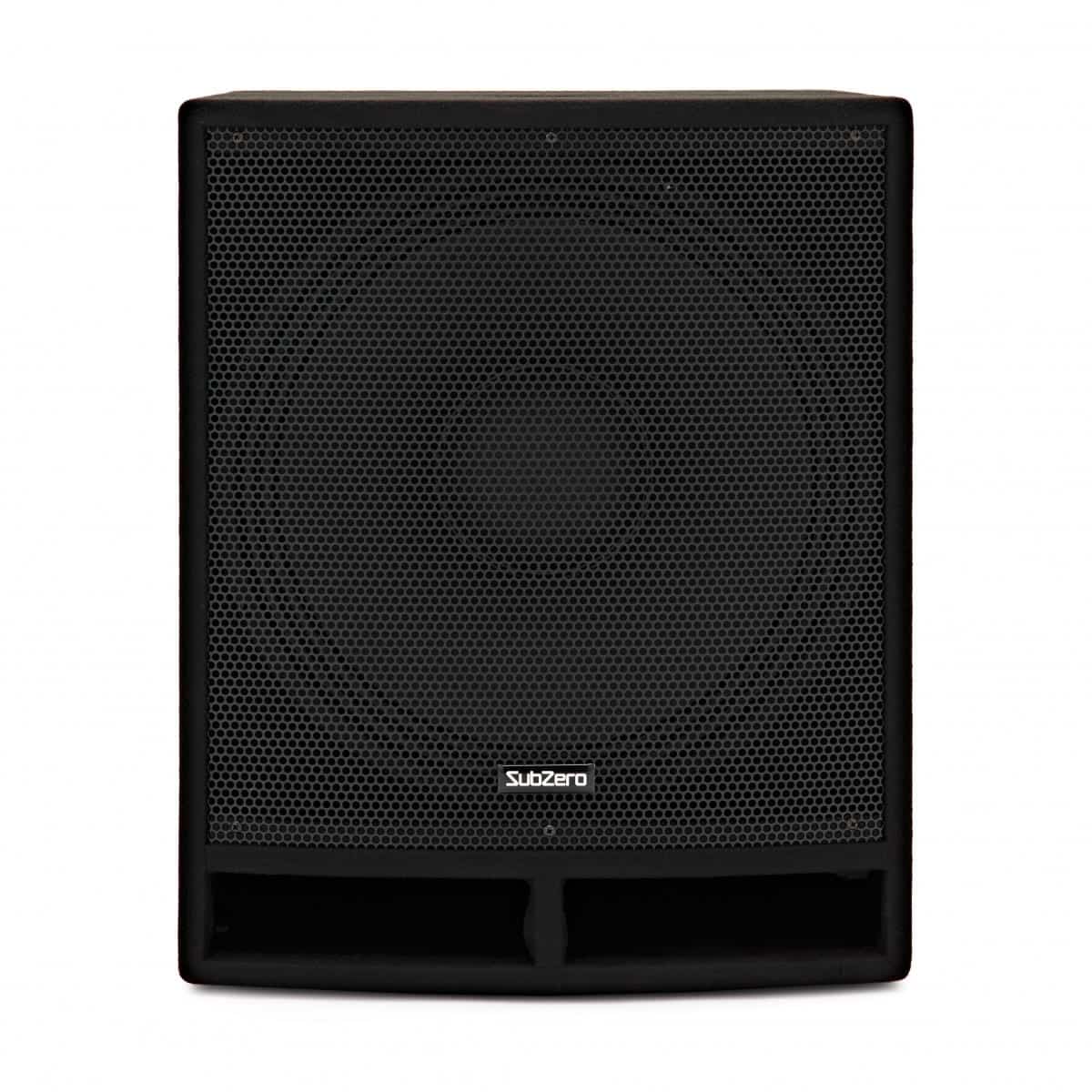
FEATURES: 18" driver delivering deep, punchy bass
OTHER INFO: Rugged wooden cabinet with metal grille, passive design (requires external amplifier)
- Strong, room-filling bass response
- Durable build for live performance use
- Compatible with most PA systems
- Requires an external amplifier
When you click ‘Check Price’, you’ll see there are loads of great places to buy this item. Our personal favorite is Sweetwater for the US, and Thomann and Gear4Music for the UK & Europe.
They are the largest music retailers, with excellent customer service, competitive prices, really fast shipping, and the longest guarantees.
The professional musician who wrote this article combined many things,
from the product build, manufacturer’s reputation through to feedback
from other users, to create our famous TedScore™.
Which Should You Choose? Factors to Consider
Your choice between monitor speakers and hi-fi speakers depends on your listening habits, room setup, and budget. I’ll walk you through the most important factors that will help you make the right decision.
Listening Preferences and Goals
always tell people to start with why they want speakers in the first place. If you’re into mixing and mastering or music production, studio monitors are your best friend because they show you exactly what’s in your recordings.
Studio monitors don’t try to make music sound “nice” – they tell you the truth. This means you’ll hear every detail, including the parts that might not sound perfect.
Hi-fi speakers take a different approach. They’re designed to make your music sound as enjoyable as possible for casual listening.
If you mainly listen to music for fun, watch movies, or just want background sound, hi-fi speakers will probably make you happier. They often boost certain frequencies to make everything sound warmer and more exciting.
Think about your main activity: creating music or enjoying it. Music production requires accuracy, while entertainment listening benefits from enhanced sound.
always tell people to start with why they want speakers in the first place. If you’re into mixing and mastering or music production, studio monitors are your best friend because they show you exactly what’s in your recordings.
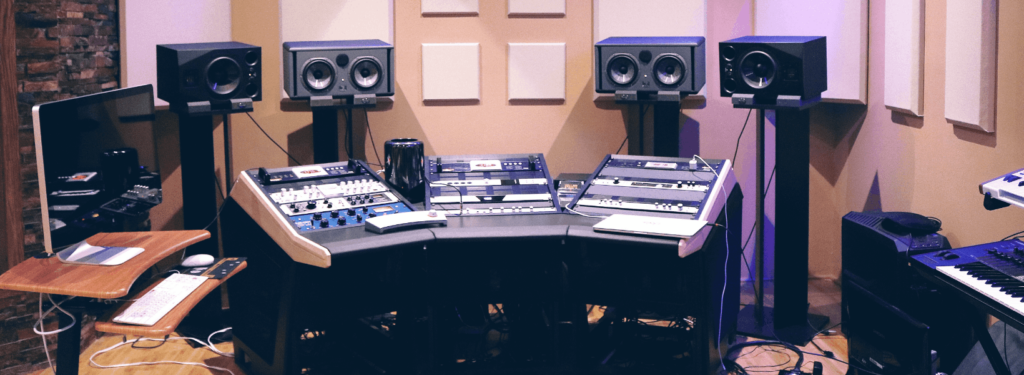
Studio monitors don’t try to make music sound “nice” – they tell you the truth. This means you’ll hear every detail, including the parts that might not sound perfect.
Hi-fi speakers take a different approach. They’re designed to make your music sound as enjoyable as possible for casual listening.
If you mainly listen to music for fun, watch movies, or just want background sound, hi-fi speakers will probably make you happier. They often boost certain frequencies to make everything sound warmer and more exciting.
Think about your main activity: creating music or enjoying it. Music production requires accuracy, while entertainment listening benefits from enhanced sound.
Room Acoustics and Placement
Studio monitors don’t try to make music sound “nice” – they tell you the truth. This means you’ll hear every detail, including the parts that might not sound perfect.
Hi-fi speakers take a different approach. They’re designed to make your music sound as enjoyable as possible for casual listening.
If you mainly listen to music for fun, watch movies, or just want background sound, hi-fi speakers will probably make you happier. They often boost certain frequencies to make everything sound warmer and more exciting.
Think about your main activity: creating music or enjoying it. Music production requires accuracy, while entertainment listening benefits from enhanced sound.
Cost and Equipment Compatibility
Studio monitors usually come with built-in amplifiers, which means you plug them straight into your audio interface or computer. This makes them simpler to set up but limits your upgrade options later.
Hi-fi speakers need a separate amplifier, which adds to your total cost upfront. However, you can upgrade either the speakers or amplifier independently as your budget grows.
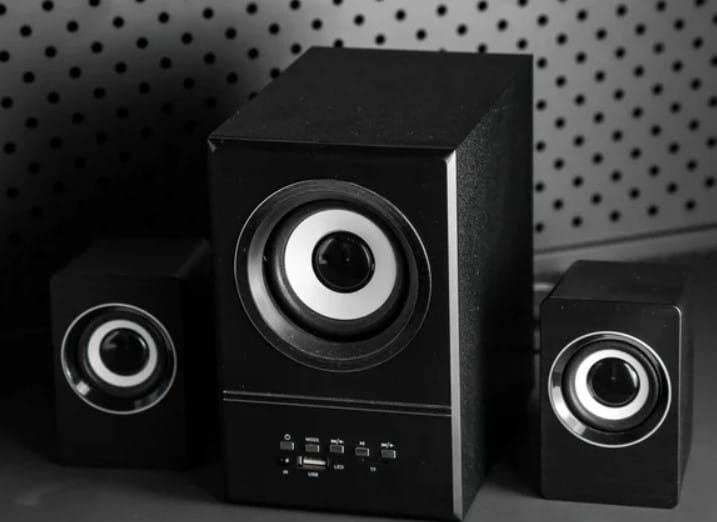
Monitors typically use XLR or TRS connections, which work great with audio production gear. Hi-fi speakers use standard speaker wire connections that work with home stereo equipment.
Your existing gear matters too. If you already have an audio interface for recording, monitors make perfect sense.
FAQ's
The main difference between a monitor and a PA speaker is that monitors are designed for near-field listening, allowing performers to hear themselves clearly on stage, while PA speakers are built to project sound over a larger area for audiences.
While you can use regular speakers instead of studio monitors, it is not recommended, as studio monitors are specifically designed for accurate sound reproduction, which is crucial for mixing and mastering music.


